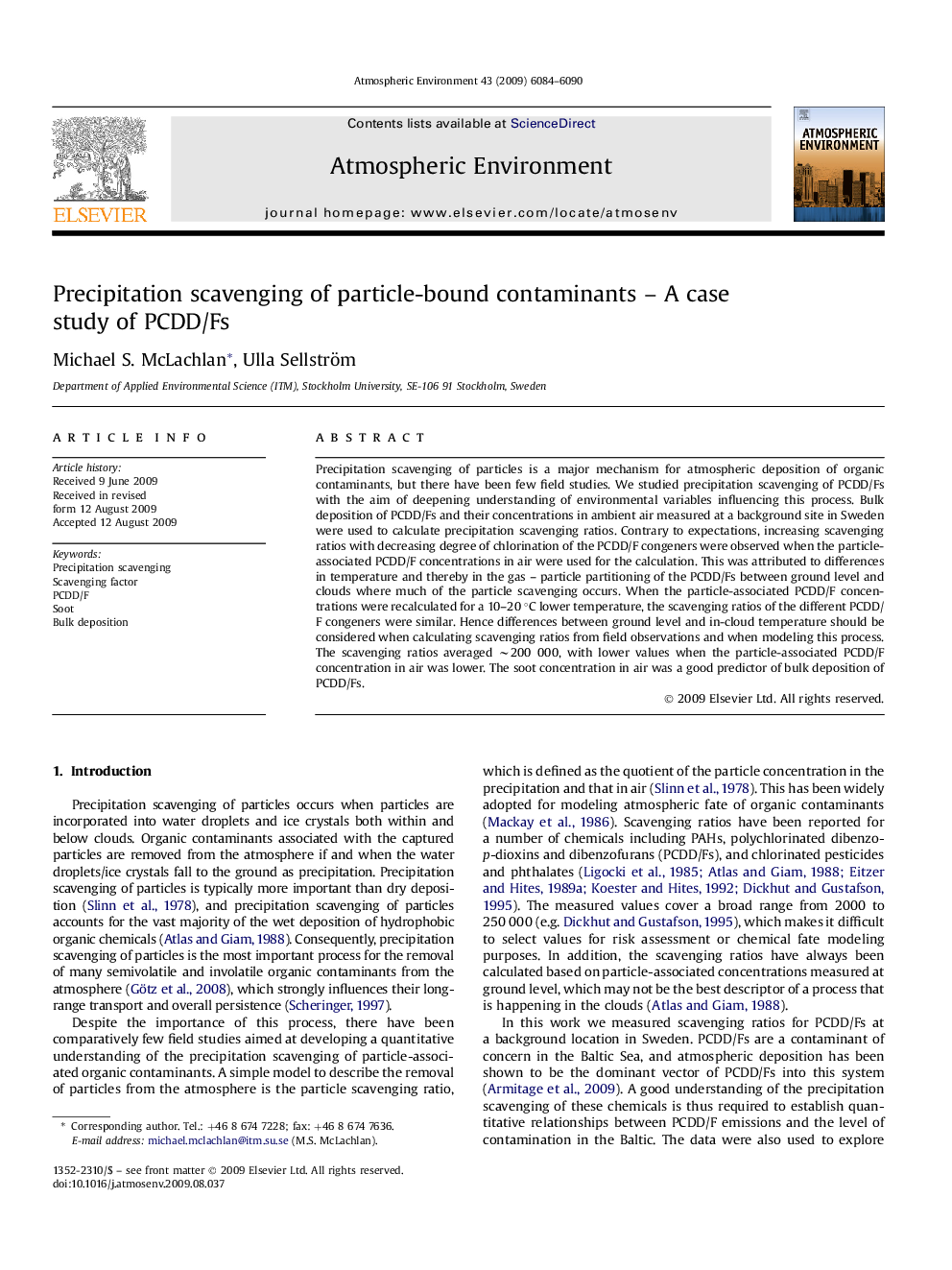| Article ID | Journal | Published Year | Pages | File Type |
|---|---|---|---|---|
| 4441397 | Atmospheric Environment | 2009 | 7 Pages |
Precipitation scavenging of particles is a major mechanism for atmospheric deposition of organic contaminants, but there have been few field studies. We studied precipitation scavenging of PCDD/Fs with the aim of deepening understanding of environmental variables influencing this process. Bulk deposition of PCDD/Fs and their concentrations in ambient air measured at a background site in Sweden were used to calculate precipitation scavenging ratios. Contrary to expectations, increasing scavenging ratios with decreasing degree of chlorination of the PCDD/F congeners were observed when the particle-associated PCDD/F concentrations in air were used for the calculation. This was attributed to differences in temperature and thereby in the gas – particle partitioning of the PCDD/Fs between ground level and clouds where much of the particle scavenging occurs. When the particle-associated PCDD/F concentrations were recalculated for a 10–20 °C lower temperature, the scavenging ratios of the different PCDD/F congeners were similar. Hence differences between ground level and in-cloud temperature should be considered when calculating scavenging ratios from field observations and when modeling this process. The scavenging ratios averaged ∼200 000, with lower values when the particle-associated PCDD/F concentration in air was lower. The soot concentration in air was a good predictor of bulk deposition of PCDD/Fs.
